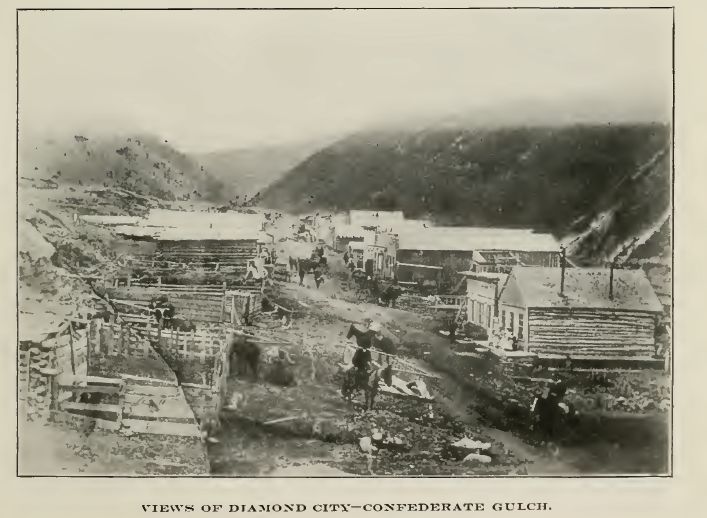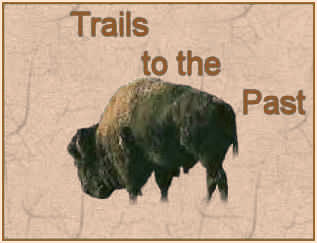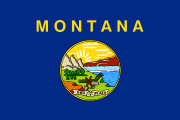Confederate Gulch and Diamond City
 |
| Coordinates: 46°35'50"N 111°25'26"W Established: 1860's Abandoned: mid-1940s Elevation: 5,005 feet (1,526 m) |
Confederate Gulch is a steeply incised valley on the west facing slopes of the Big Belt Mountains. Its small stream drains westward into Canyon Ferry Lake, on the upper Missouri River Valley near present day Townsend, Montana. In 1864 Confederate soldiers on parole from the American Civil War made a minor gold discovery in the gulch, but in 1865 the discovery of the sensationally rich Montana Bar—one of the richest placer strikes per acre ever made—led to other rich gold strikes up and down the gulch, and touched off a frantic boom period of placer gold mining that extended through 1869. From 1866 to 1869 the gulch equaled or outstripped all other Montana Territory mining camps in gold production, producing an estimated $19 to $30 million in gold—late 1860s money. For a time, the gulch became the largest community in Montana—in 1866 Montana had a total population of 28,000, and of these, about 10,000 (35%) were working in Confederate Gulch.
The main community was Diamond City 46°35'50"N 111°25'26"W, and while gold production was at its height, Diamond City roared along both night and day. During its heyday, Diamond City was the county seat of Montana's Meagher County, although today the area has become part of Broadwater County. In their frantic efforts to get at more gold, the miners built ditches and flumes that extended for miles, and employed high pressure hydraulic mining methods which washed down whole hillsides and ate up the gulch floor. The hydraulic mining process stripped the gulch and left huge spoil banks—hydraulic mining even consumed the site of Diamond City, which had to be moved to a new location. Then the gold ran out, the boom was over and the population simply picked up and left. In 1870 there were only 255 people left and a year later only about 60. Today hardly a trace remains of Diamond City or the other gulch communities. The gulch is quiet and empty, with only an occasional summer prospector, or a rare traveler using the unimproved road that still winds up the gulch from the Missouri Valley and crosses the top of the Big Belts on its way down to the Smith River Valley. Diamond City, Confederate Gulch and the Montana Bar were spectacular examples of the flash-in-the pan Montana placer gold mining camps, but what a flash.
Confederate Gulch and Diamond City - Wikipedia

